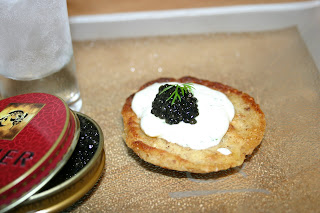Tuesday, July 19, 2011
Baklava
Many different nations lay claim to the baklava, it is a well known pastry that has evolved through-out the Central Asian Countries. It is thought to have begun with the nomadic tribes of turkey, it has been claimed by the Greek, the Armenians introduced it to the spice route and the middle eastern nations embraced it and made it their own. There are many variations on this glorious sweet pastry but the heart of it is layers of thin delicate filo or phylo pastry and butter with a filling of either almonds, walnuts or pistachios or a combination ( I would also consider using pecans or macadamias ) baked and then soaked in a sugar syrup. Depending on the ethnic group preparing the baklava there is also a variation of spices, honey or the addition of rose water or orange blossom water. Here is my version and it is absolutely gorgeous, there is so little effort in making this sweet for such a big reward.
Baklava
125 grams each almonds and walnuts
50 grams sugar
1 tspn cinnamon
1 tsp ground cardamon
100 grams butter, melted
250 grams filo pastry
orange zest, jullienne
150 grams sugar
75 grams honey
1 cinnamon stick
1 tspn orange blossom water or rose water
150mls water
Grease a square cake tin with butter. In a food processor pulse nuts with sugar and spices so that you have a mixture of course and fine nuts. Cut the filo pastry to the size of your tin. Cover with a damp tea towel so that the filo pastry does not dry out. Layer one third of your pastry in the tin brushing each layer with butter as you go. Cover pastry with half of the nut filling and repeat another layer of pastry, nuts and the final layer of pastry. Refrigerate until firm and cut into portion size pieces. Pre-heat the oven to 175c and bake for 45 minutes or until golden brown.
For the syrup: using a peeler peel thin strips of orange skin and thin slice finely for jullienne. Bring the sugar, honey, cinnamon, orange peel and water to the boil and simmer for 20 minutes. Stir in blossom or rose water. Pour hot syrup over the hot pastry and allow to soak in (over night if you can possibly wait that long)
Tuesday, July 5, 2011
Caviar
Caviar is simply sieved and lightly salted sturgeon roe. There are less than 30 species of sturgeon with three of these being the most popular Beluga, Ossetra, and Sevruga. The eggs can be black, brown, dark green, grey or golden. The best known caviar comes from the countries on the Black and Caspian seas, but the decline in sturgeon numbers there and else where led to the suspension of the international trade of all caviar from wild sturgeon. Good quality sturgeon caviar is now farmed.
The Russians like to spread caviar onto blinis (small buckwheat pancakes) with sour cream and vodka so when presented with a tin I took a leaf out of their book. I also smeared it extravagantly on hot buttered toast.
Blinis
5 grams yeast
60mls warm water
1/2 tsp sugar
120mls milk
30grams butter, melted
60grams buckwheat flour
60grams white flour
1/2 tsp salt
2 eggs, seperated
Dissolve the yeast in the warm water with the sugar put to one side until it begins to froth. In a large bowl combine flours, salt, milk, egg yolks, melted butter and yeast mixture. Leave batter in a warm place until it doubles in size. Whisk egg whites until stiff peaks form and fold through batter with the whisk. Fry spoonfuls of batter in vegetable oil and butter over a moderate heat.
On top of the blinis place a spoonful of seasoned sour cream mixed with chives or dill, top with caviar and serve with shots of icy cold vodka!
Subscribe to:
Posts (Atom)

